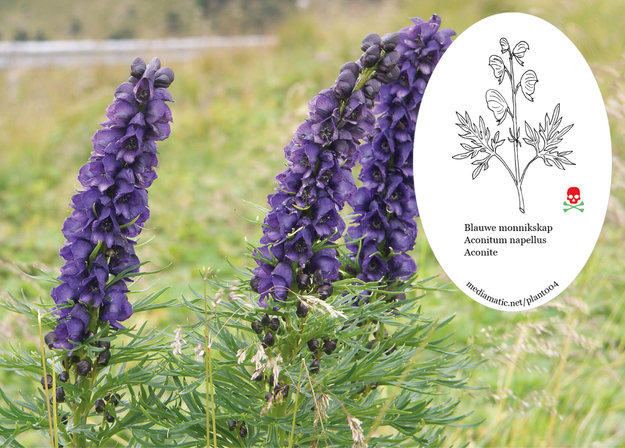Aconite has been used since ancient times, especially as an antidote to poisoning. Since the entire plant is itself very toxic, however, any use should be under the guidance of a skilled practitioner. All parts of the plant are used medicinally. The root is the most important and this is harvested as soon as the plant dies down in the autumn and is dried before use. The other parts of the plant are less important and are used fresh, being harvested when the plant is coming into flower. The root is analgesic, anodyne, antirheumatic, diaphoretic, diuretic, irritant and sedative. Due to its poisonous nature, it is not normally used internally though it has been used in the treatment of fevers. Externally, it is applied to unbroken skin in the treatment of rheumatism, painful bruises, neuralgia etc. All parts of the plant, except the root, are harvested when the plant is in flower and used to make a homeopathic medicine. This is analgesic and sedative and is used especially in the treatment of fevers, inflammation, bronchitis, neuralgia etc. Source: https://pfaf.org/
Aconite
Aconitum napellus
Find more about this plant on Wikipedia.
